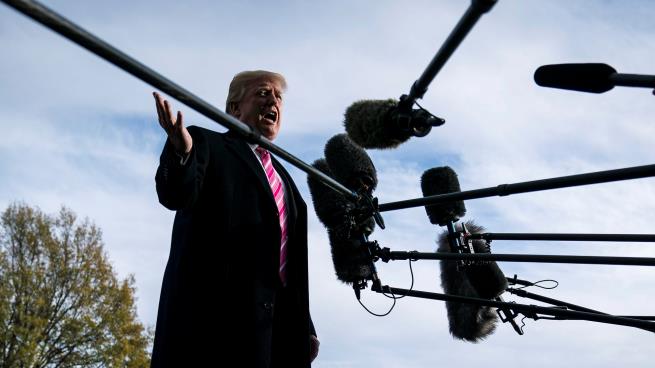صحافة دولية » How Murdoch captured the Journal


Boston
By Claude R. Marx
Bostonians have heard this story before.
The owners of a well-regarded, family-owned newspaper decide, for personal and financial reasons, to sell their treasured publication to a media conglomerate, and the results are decidedly mixed.
In this case, however, it is not the Taylors selling the Globe to The New York Times Co., but the Bancrofts, who had a controlling interest in The Wall Street Journal, accepting Rupert Murdoch s offer to buy the broadsheet.
In “War at The Wall Street Journal: Inside the Struggle to Control an American Business Empire,’’ Sarah Ellison tells us all about it in vivid detail and reinforces the adage about truth at times being stranger than fiction. Part of the tale reads like an episode of a soap opera, while another slice of it reads like a case study written at Harvard Business School. Ellison, though at times clearly nostalgic for the pre-Murdoch Journal for which she worked, takes an approach that is balanced and nuanced.
The Bancroft family and its various offshoots controlled the publicly owned company that owned the paper for decades. Some members had lost interest in it and wanted to cash out. Some were motivated by greed, while others lamented the company s mediocre financial performance. The latter was caused both by poor management decisions and by the changing media landscape.
Ellison shows the mixed feelings of some family members about the sale when describing Leslie Hill, a representative on the Dow Jones board of directors. “She tended to disagree with whoever was speaking or whatever proposal was on the table at the moment. She loved Dow Jones but she was tired of what she saw as the company’s inept management. If somebody came along to save the company, she would support him or her. Unless she decided she would not.’’
Murdoch had been making overtures to buy the company for years, all of which had been routinely rebuffed by the company’s executives and Bancroft lawyers (from the Boston firm Hemenway & Barnes), often without bothering to inform family members.
Ellison tells how many family members thought that in light of his conservative politics and his proclivity to sensationalize the news, selling to Murdoch was akin to a deal with the devil. Several things would change their mind, including his $60 per share offer (far more than what the stock was trading for) and the eventual realization that the newspaper could only thrive as part of a larger media enterprise.
The book takes readers inside the key meetings that led to the deal and Ellison, who covered the saga while a Journal reporter, shows rather than tells, even when she was not in the room.
During the final meeting in July 2007, when family members decided to sell, Ellison notes how Lisa Steele described her change of heart.
“The decision, desperate and discouraging as it seemed to her earlier in the summer, had long settled into inevitability,’’ Ellison wrote. “Steele told her family that she had done ‘her own due diligence’ on the deal and had come to the painful conclusion that it was time to sell the company. Her words — ‘It will be irresponsible to walk away from this deal’ — were welcomed warmly in the News Corp camp.’’
Ellison s discussion of the clash of journalistic cultures that occurred when Murdoch took over is the book s most predictable and least interesting part. Here she gives considerable space to the opinions of those who contend that Murdoch s changes — shortening the articles, putting more emphasis on nonbusiness stories, and giving the news section a less centrist bent — has decreased the paper s quality. Her treatment of his obsession with beating the Times is informative but doesn’t break a great deal of new ground.
Despite these small shortcomings, however, “War at the Wall Street Journal’’ is a riveting and engaging examination of the current state of US media and the drama behind one of its most important companies.
By Claude R. Marx
Bostonians have heard this story before.
The owners of a well-regarded, family-owned newspaper decide, for personal and financial reasons, to sell their treasured publication to a media conglomerate, and the results are decidedly mixed.
In this case, however, it is not the Taylors selling the Globe to The New York Times Co., but the Bancrofts, who had a controlling interest in The Wall Street Journal, accepting Rupert Murdoch s offer to buy the broadsheet.
In “War at The Wall Street Journal: Inside the Struggle to Control an American Business Empire,’’ Sarah Ellison tells us all about it in vivid detail and reinforces the adage about truth at times being stranger than fiction. Part of the tale reads like an episode of a soap opera, while another slice of it reads like a case study written at Harvard Business School. Ellison, though at times clearly nostalgic for the pre-Murdoch Journal for which she worked, takes an approach that is balanced and nuanced.
The Bancroft family and its various offshoots controlled the publicly owned company that owned the paper for decades. Some members had lost interest in it and wanted to cash out. Some were motivated by greed, while others lamented the company s mediocre financial performance. The latter was caused both by poor management decisions and by the changing media landscape.
Ellison shows the mixed feelings of some family members about the sale when describing Leslie Hill, a representative on the Dow Jones board of directors. “She tended to disagree with whoever was speaking or whatever proposal was on the table at the moment. She loved Dow Jones but she was tired of what she saw as the company’s inept management. If somebody came along to save the company, she would support him or her. Unless she decided she would not.’’
Murdoch had been making overtures to buy the company for years, all of which had been routinely rebuffed by the company’s executives and Bancroft lawyers (from the Boston firm Hemenway & Barnes), often without bothering to inform family members.
Ellison tells how many family members thought that in light of his conservative politics and his proclivity to sensationalize the news, selling to Murdoch was akin to a deal with the devil. Several things would change their mind, including his $60 per share offer (far more than what the stock was trading for) and the eventual realization that the newspaper could only thrive as part of a larger media enterprise.
The book takes readers inside the key meetings that led to the deal and Ellison, who covered the saga while a Journal reporter, shows rather than tells, even when she was not in the room.
During the final meeting in July 2007, when family members decided to sell, Ellison notes how Lisa Steele described her change of heart.
“The decision, desperate and discouraging as it seemed to her earlier in the summer, had long settled into inevitability,’’ Ellison wrote. “Steele told her family that she had done ‘her own due diligence’ on the deal and had come to the painful conclusion that it was time to sell the company. Her words — ‘It will be irresponsible to walk away from this deal’ — were welcomed warmly in the News Corp camp.’’
Ellison s discussion of the clash of journalistic cultures that occurred when Murdoch took over is the book s most predictable and least interesting part. Here she gives considerable space to the opinions of those who contend that Murdoch s changes — shortening the articles, putting more emphasis on nonbusiness stories, and giving the news section a less centrist bent — has decreased the paper s quality. Her treatment of his obsession with beating the Times is informative but doesn’t break a great deal of new ground.
Despite these small shortcomings, however, “War at the Wall Street Journal’’ is a riveting and engaging examination of the current state of US media and the drama behind one of its most important companies.




